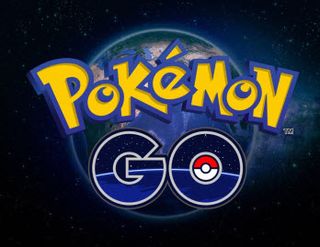‘Pokémon Go’: Latest Salvo in Wireless Wars

Spend any time outdoors lately and you've likely noted an exceptional uptick in smartphone walker s— slower with the steps, eyes fixed on tiny screens. However you feel about the Pokemon Go phenomenon, it was only a matter of days before a leading wireless carrier offered free data to its customers playing the game.
The move was the latest in a long line of savvy salvos in the intense, ongoing competition among regional and national wireless carriers to attract and keep customers. Indeed, a look at advertising buys over the past year reveals no fewer than 35 wireless companies taking to the airwaves some 440,000 times to make their case to consumers.
Mobile Future conducted a recent video project aimed at capturing the frenetic pace and free-wheeling diversity of the wireless wars. You can watch it here.
Anyone who questions the competitiveness of the U.S. wireless marketplace need only turn on their television. The top four national wireless providers are routinely ranked among the top 10 U.S. advertising spenders as each seeks to one-up the other with attractive consumer deals and claims of network superiority.
These intensive rivalries are not only a reality—but the defining reality of the modern U.S. mobile marketplace. And, the constant swirl and evolution of competitive offerings clearly empower consumers. One company dumps contracts. Others follow suit. Data rollover plans come on the market. Rivals respond in kind. Wireless companies are perpetually seeking new ways to find an edge.
Clearly, data is the belle of the ball: How much do you get, for what price and with what kind of rollover arrangement? Market rivals have a multitude of answers to these questions, and consumers freely sift through them for offerings that best suit their unique wireless way of life.
One thing virtually all consumers agree on seems straight out of a Captain Obvious skit: Consumers are fans of free. They are all for new choices that allow them to use more data at less or no cost. They appreciate, embrace and are excited for the free and low-cost offerings emerging in the marketplace. Indeed, a Mobile Future consumer survey found 88% of Americans did not want to see their government have any role in approving new wireless business models. They want that job for themselves.
\
Wireless competition abounds — to consumers’ and our nation's benefit:
• It's the reason a full 92% of Americans can choose from at least four wireless service providers — including three or more 4G offerings.
• It's the reason we reached President Obama's goal of connecting 98% of the country to the mobile Internet — a year ahead of schedule.
• It's the reason that the wireless consumer price index decreased by 45% since 1997 while overall consumer prices increased by 36% .
• It's the reason U.S. wireless companies lead the world in investment in next-generation 4G — and ultimately 5G — wireless networks.
• And, yes, perhaps it’s partly responsible for an inordinate number of your neighbors having a close encounter with a tree this weekend.
The point is: In today’s competitive wireless world, the choice is always yours as consumers. Market rivals are racing every day to dream up new ways to win and keep your business — creating fresh opportunities for consumers to take full advantage of all that mobile innovation has to offer. These are tangible benefits every American can safely grasp and use to their benefit in the real world. Take that, Pikachu.
Jonathan Spalter is chair of Mobile Future, a Washington, D.C.-based association of technology companies and nonprofit groups working to support investment and innovation in the wireless sector.
Multichannel Newsletter
The smarter way to stay on top of the multichannel video marketplace. Sign up below.
